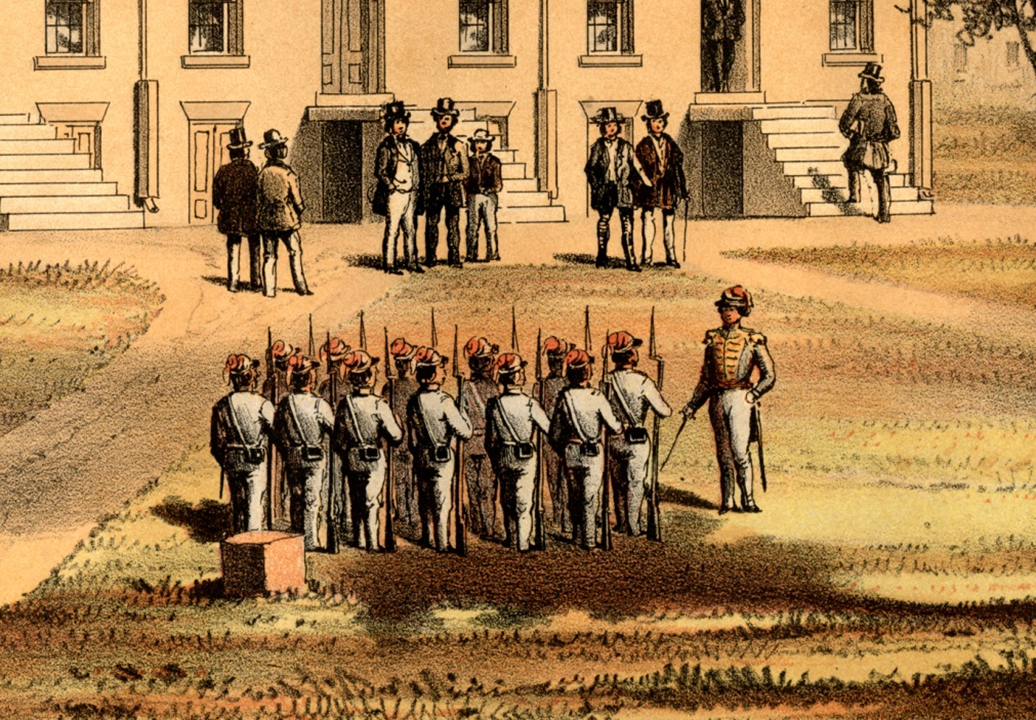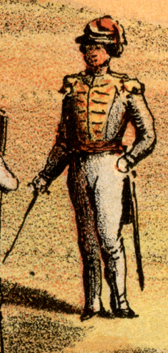
College Cadets
This post is about our College Cadets which were formed in the late 1850’s, partly as a physical activity for students. At that time on campus, there were no organized athletics, the College Cadets competed with other drill companies including Lew Wallace’s Montgomery Guards.
The men bought their own uniforms, at a cost of $20.00. With assistance from Lew Wallace, the government provided rifles for drilling. Of the thirty-six cadets who enrolled in the Union army, sixteen did so on the day war was declared. Eighteen former cadets became officers, one a brigadier general, two colonels, nine captains and six lieutenants. The officers of the College Cadets were
John J. P. Blinn, Capt.
Ozro J. Dodds 1st Lieut.
John F. Caven, 2nd Lieut.
M.M. Milford 3rd Lieut.
This Cadet Roll is an original listing of the Cadets and the marks across it note the attendance, or absence, of the members.
From a letter by former Cadet Monroe Milford following the war, “The uniform was gray (not rebel) – pantaloons had dark stripes down each side. Coat cut away, much like the U.S. Corps of Cadets at West Point fatigue, cap same color as suit – The breast of officers’ coat covered with alternate horizontal bands of black velvet and gold from the chin to the waist in the form of a shield. The officers wore epaulets…”

More detail comes from a letter from former Cadet John Cleland to President Tuttle of January 1878, “Blinn and Caven were the prime movers in the matter of organization I believe and were the chief officers…WE had what we considered & what I believe was…a fine drill and a considerable esprit de corps…We sure were able to hold our own against the militia Montgomery Guards – an old organization and frequently appeared in public with them in battalion drill.
“When the war came on us the cadets enlisted almost in a body and I think I am right in the assertion that almost every member of the Cadets who went into the Army for a longer period than 90 days (and this includes the largest portion) either went in or came out with an office. This also true of the guard and in each case it was largely the result of previous “military experience” in a peace footing.”
At the head of the column of these Cadets is John J.P. Blinn, the organizer. In the next few days I will share his story of John Blinn and that of John C. Black, two other members of the Cadets.
Beth Swift


One comment on “College cadets”
Beth:
Thank you for sharing the interesting info. I googled lithograph and Wabash and found this entry. I am a 1987 graduate of Wabash College and former U.S. Army Officer having served in the Indiana Army National Guard and during Operation Iraqi Freedom (2004-2005). My in-laws found a small copy of the lithograph and gave it to me. It is being framed as I write. Now I know the rest of the story!
Do we know anything about Frank Heaton the publisher or A.S. Hughes the photographer?
Best,
Tim Jeffers
DearTim,
I am sorry to say that I don’t know anything about either Heaton or Hughes, but I am so glad they were doing this work as this is a great look at the College at that time.
Best,
Beth
Comments are closed.